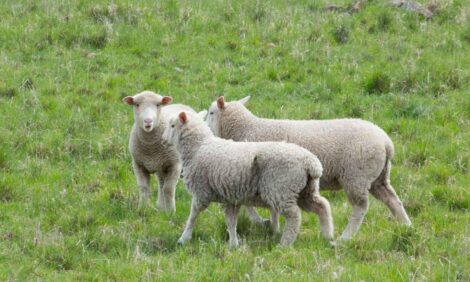



Cattle Market Shock Nearly Over, Experts Say
US – Insights about the recent market price shocks and potential for future turbulence were discussed with more than 2,000 beef producers at the CattleFax Outlook Session held during the 2016 Cattle Industry Convention and NCBA Trade Show.The downward spiral from the late 2014 and early 2015 record-high cattle prices has been tough for many in the business, but CattleFax CEO Randy Blach said the steepest portion of the market correction has passed.
He explained that tighter protein supplies and stronger exports created the ‘perfect storm’ for the cattle market to reach the extreme highs. Animal health challenges limited poultry and pork production in 2014 – creating the tightest per capita US net protein supply in the last 20 years.
“We are coming off historic highs in the cattle market, created by unique conditions in both the global and domestic protein markets,” said Mr Blach.
“Dynamics, specifically larger protein supplies, led to a significant correction in price in 2015. A large portion of the market down trend is over now. However, the cycle shows prices continuing to trend lower in 2016, 2017 and 2018.”
Analysts predicted the cattle feeder – after losing about $200 per head in 2015 – will be slightly profitable this year. Stocker operators will experience tighter margins, and cow/calf producers will remain profitable. The team of economists expect fed cattle prices will average $130 to $135/cwt. in 2016.
“Cow/calf producers will still be profitable, but at substantially lower levels than the past two years,” said Kevin Good, Senior Analyst and Fed Cattle Market Specialist, CattleFax. “We predict the cattle feeder will have tight margins for the year with potential for profitability by mid-year.”
A two-year El Nino weather pattern has replenished moisture conditions across the country, specifically the West coast, which saw some relief recently. The weather outlook appears favourable, especially moisture conditions for grasslands, according to the weather outlook from Art Douglas, PhD, Professor Emeritus at Creighton University.
“As we head into 2016, a split jet stream pattern will favour above-normal precipitation from California to the Southern Plains and the Southeast through March,” said Mr Douglas. “In the Corn Belt, spring will be wetter-than-normal, which will be accompanied by slower spring warming. Delays in fieldwork and planting dates are likely to result.”
Analysts predicted $294 per head added value from exports for 2016 – a $66 drop per head from 2014 values. This decrease in export potential is caused by a combination of a stronger US dollar, slowdown in global markets and challenges with market access. China and other global markets are still the biggest opportunities for US beef, but trade restrictions will continue to limit potential in the year ahead.
Beef imports are predicted to be down 8 per cent due to the combination of lower trim prices and increasing domestic cow slaughter. The United States is in a rebuilding stage and females are being held back for the cowherd. Analysts predict the US cowherd will grow another 600,000 head in 2016 following a 1.1 million head increase in 2015.
TheCattleSite News Desk


